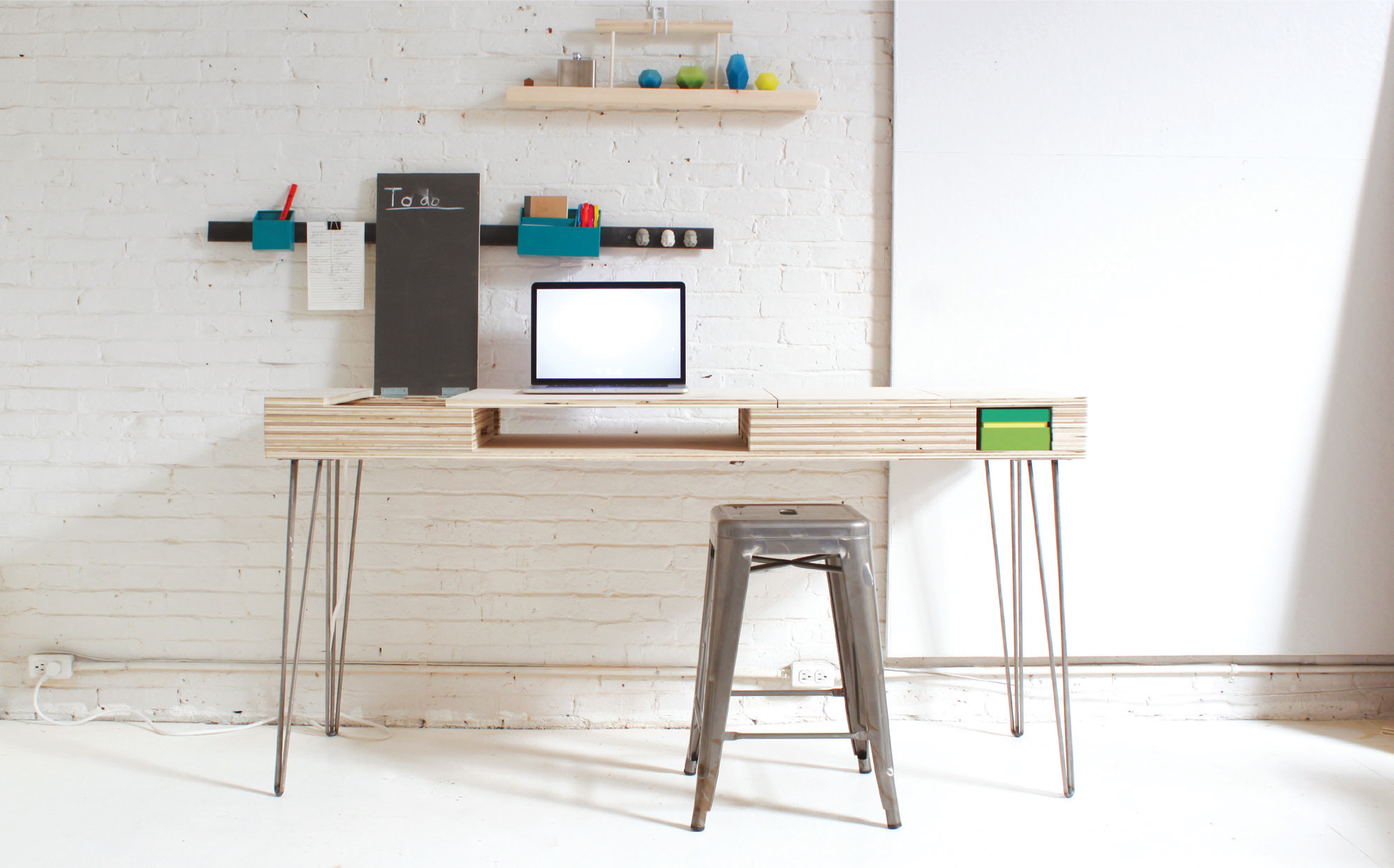
With the flip desk, I set out to create a small, simple desk designed for multi-tasking. It’s tailor-made for the small apartment or office where space and storage are at a premium. More than just a workstation, the desk can double as a craft table, a dinner table for one, a make-up station or vanity, or a place to store mail. Use it as a workspace during the day and tuck everything out of sight in the evening.
Editors’ note: This project is reprinted from the book HomeMade Modern by Ben Uyeda. We thought it was a cool project and the publisher was generous enough to let us share it here. The book is available on Running Press, a member of the Perseus Books Group, © 2015.



